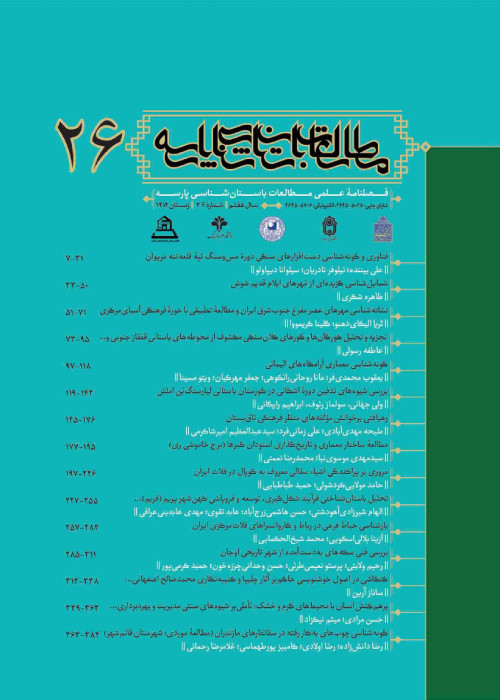Lithic Industries of Pleistocene Communities on the Northern Littoral of the Strait of Hormuz and Oman Sea: A Review of a Lithic Collection from the Survey of Thibault and Kadjar, 1977
One of the key issues of the Paleolithic archaeology is pathways and expansion routes of Pleistocene human populations into Asia. Recent discovered Paleolithic sites in the southern coasts and hinterlands of Iran, indicate the importance of these zones in the Pleistocene human dispersals. The 1977 joint French-Iranian geological survey carried out by Thibault, Dufaure, Mercier and Kadjar, gave rise to one of the important contributions to Paleolithic knowledge on the northern coastline of the Persian Gulf and the Oman Sea in pre-revolutionary years. During this survey, remarkable lithic assemblages were collected above a sequence of successive pediment surface, but unfortunately, the final report of Paleolithic finds, was never published. The lithic collections kept at the Paleolithic Department of National Museum of Iran. In this paper, the techno-typological characteristics of this collection is presented. The most prominent feature of this collection is the core-flake industry of the Lower Paleolithic; although we are not sure about the Acheulian evidence. The Middle Paleolithic artifacts in the collections are defined by Levallois debitages, discoid/semi-centripetal cores, and scrapers on flakes, especially transverse and oblique scrapers; however, it is not enough to attribute these finds to the Mousterian culture. The low frequencies of the blades and the lack of bladelets make it difficult to draw conclusions about the Upper/Epipaleolithic industries. The small number of blades and the presence of single platform blade/bladelet core, as well as a truncated blade, are possible evidence of Upper/Epipaleolithic presence in these assemblages. These assemblages can be considered as a new insight into technological behavior of Pleistocene hunter-gatherers in this poorly known part of the Iranian plateau. They show the high capacity of northern shores and littoral of the Persian Gulf and Oman Sea for Pleistocene archaeological studies, and a notable place to test hypotheses such as Out-of-Africa and coastal expansions.
- حق عضویت دریافتی صرف حمایت از نشریات عضو و نگهداری، تکمیل و توسعه مگیران میشود.
- پرداخت حق اشتراک و دانلود مقالات اجازه بازنشر آن در سایر رسانههای چاپی و دیجیتال را به کاربر نمیدهد.



